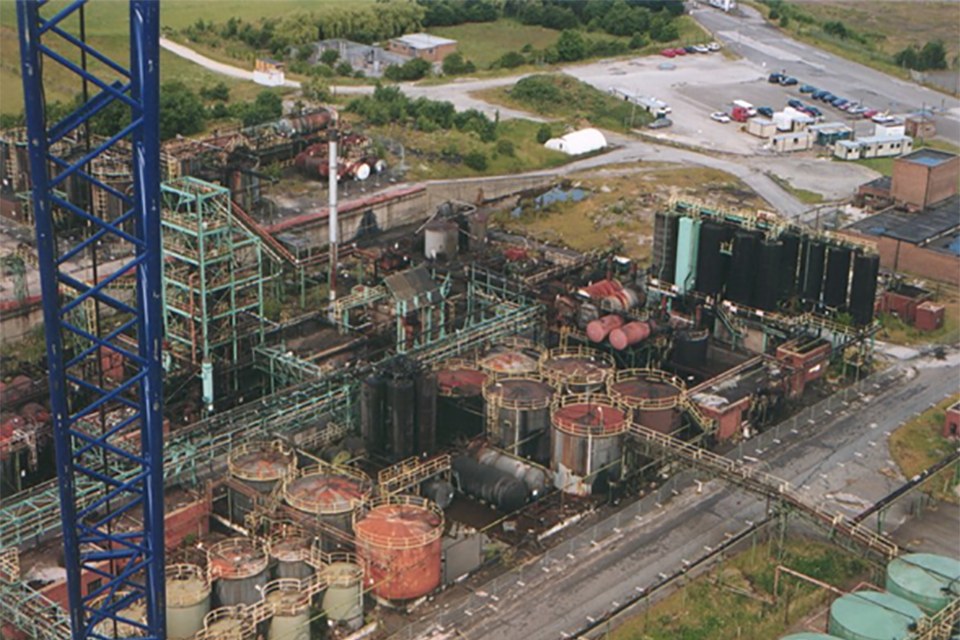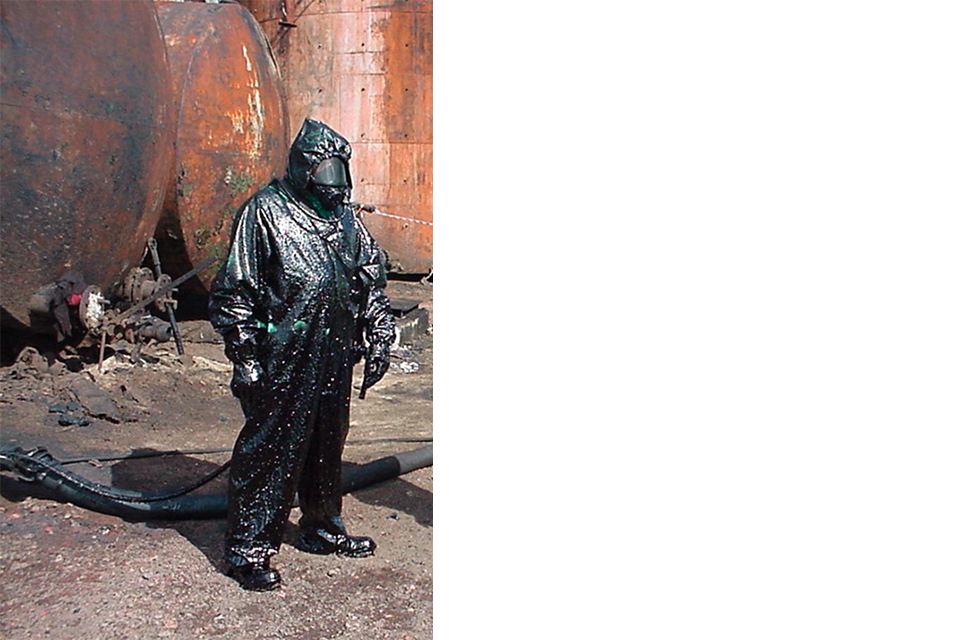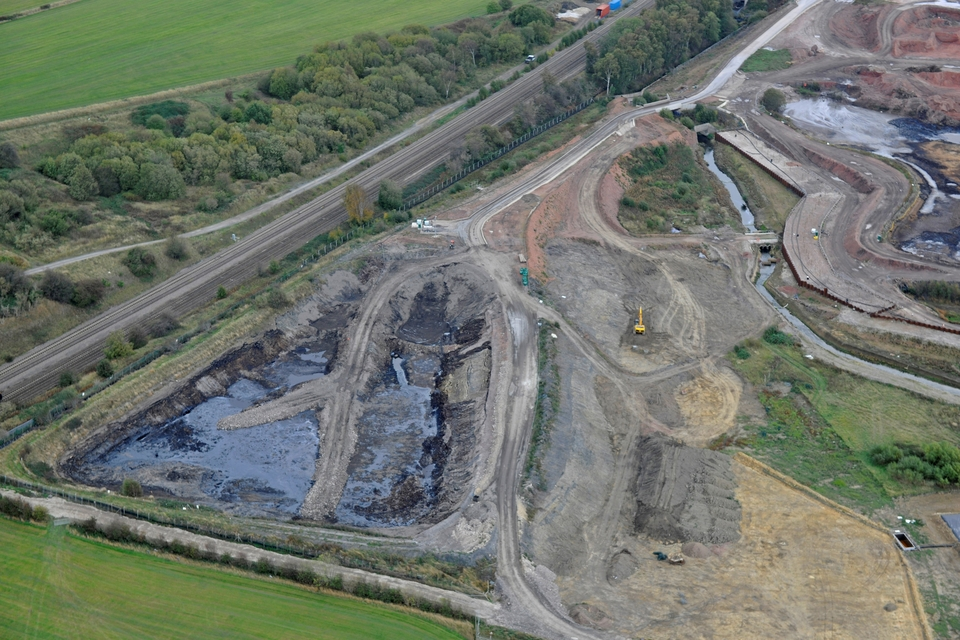The Avenue Landscaping and Remediation Project – one of the UK's most significant brownfield projects
This is a story about one of the most ambitious and effective remediation projects ever undertaken in the UK.

Red brick detached houses on a tree-lined street
The site
In 1992 the Avenue Coking Works closed its doors. For nearly forty years the Coking Works had produced coal and gas and processed tar and sulphuric acid. By the end of its life, the site was a mess of leaky tanks, pipelines, waste tips, lagoons filled with tar and soil poisoned with cyanide and arsenic.
The 98-hectare site had polluted the River Rother and was so contaminated that it breached regulations in place to protect against serious damage to people and the environment.
The ambition for the site was to prevent additional environmental damage and restore the Avenue to a condition in which it would be suitable for other uses.

Aerial view of the pre-remediation Avenue coking works. An industrial setting with many storage and refinery structures.
Picture: BEIS and Coal Authority

Numerous old cables being lifted from a slurry of waste.
Picture: BEIS and Coal Authority

A body of liquid chemical waste against a backdrop of a mound of physical waste.
Picture: BEIS and Coal Authority
The remediation
Homes England took ownership of the site in 1999 and demolition work began, dismantling the conveyor gantries, coke oven chimneys, concrete cooling towers, the boiler house and powerhouse.
Numerous site investigations, surveys, assessments and trials were undertaken, and a strategy was developed to bring the site back into use, alongside an Environmental Impact Assessment of the proposed development, with full planning permission secured in 2007.
The scale of the remediation works was unprecedented in size and complexity, with remediation trials in Rotterdam and detailed scientific assessments in Manchester helping to inform the approach.
Beyond the structures themselves, over two million cubic metres of soil were processed through a £6.5 million soil treatment plant, which operated 24 hours a day, 7 days a week, heating the soil to up to 1,000°C, removing the contaminants.
The discharge in the 300,000 cubic metre waste tip was processed through a sorting station which sorted the waste by particle size. Once the contaminants were separated from the soil, they were stored separately prior to being effectively treated or recycled.
Homes England worked to find unique solutions to ensure that the ecology of the area was protected during the works. Prior to the works starting, an estimated 8,000 newts, 50 grass snakes and 250 water voles were translocated or otherwise protected. The final design of the project includes provision of a newt reserve as well as a vole retreat.
Working in partnership with the Environment Agency, a flood alleviation scheme was built to reduce the risk of flooding to properties in Chesterfield. This included construction of a flood storage reservoir at the site, capable of storing up to 245,000 cubic meters of flood water and controlling its flow down the river.
The project received several awards, notably the CEEQUAL Outstanding Achievement Award.
CEEQUAL is the world’s leading sustainability rating scheme for infrastructure, engineering and public realm projects. The site was praised for its extensive ecological design and management, sustainability of the remediation works and effective stakeholder consultation.
The works took almost 10 years to complete, finishing in 2018.

Person dressed in a hazmat suit that is covered in black sludge.
Picture: BEIS and Coal Authority

Aerial view of the avenue coking works site being cleared at the beginning of the remediation project. Grey and brown earth.
Picture: Commission Air Aerial Photography
New beginnings
Having completed the ambitious remediation works, the site was ready to be put to a new use. A masterplan was developed to provide nearly 500 homes supported by a sustainable drainage scheme, significant recreational space, a primary school and hectares of employment land.
The 70 hectares of open space contains some of the highest standard public sports pitches in the county, as well as fishing facilities, a remarkable fact given the former state of the site.
The site connects to the local cycle network and provides an off-road link from the south of Chesterfield to the town centre, railway station and beyond via the Trans Pennine Trail.
The work to bring the former Avenue Coking Works site back into use spanned over two decades and required the experience, ingenuity and collaboration of a range of partners including Turner & Townsend, Jacobs UK Ltd, VSD Avenue, CA Blackwell, The Land Trust and a broad range of public bodies including the Environment Agency and North East Derbyshire District Council, Derbyshire County Council and Kier Living (now Tilia Homes).
The results of the project are clear to see. One of the most ambitious regeneration projects in UK history, the regeneration of Avenue Coking Works has taken an environmental and social hazard and transformed it into a safe place where people can live, work and play, and take pride in their community.


A small river surrounded by greenery and flowers

An aerial view of the avenue coking works site after it was remediated. Houses and green landscaped space separated by a road.
Video credit: Killingley, matthew.killingley@killingley.co.uk